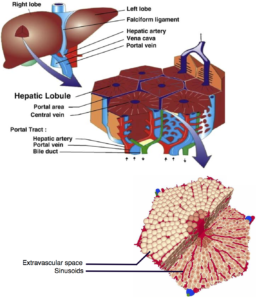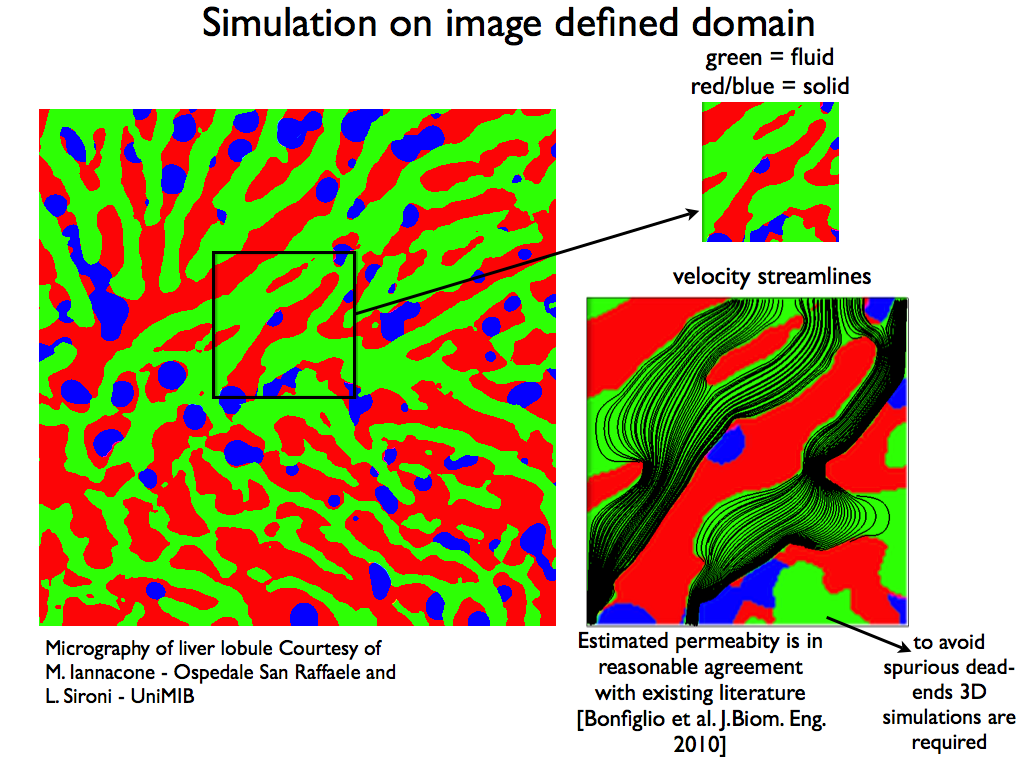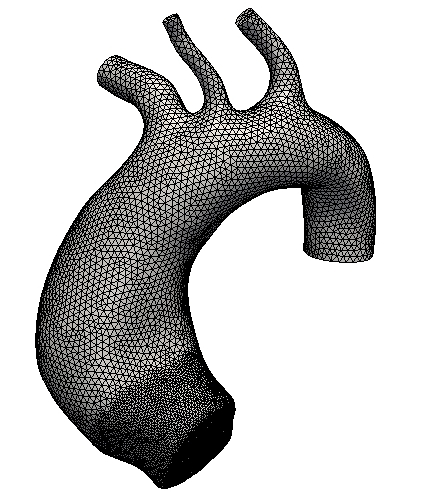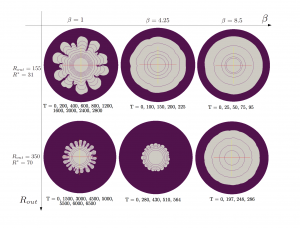Modeling the perfusion characteristics of liver tissue may provide information useful in surgical treatment which require resection of the pathological tissue regions or for drug delivery.
At the macro-scale the whole organ may be modeled as a porous medium with nonuniform, non isotropic permeability. At an intermediate scale, the tissue can be seen as composed of small units known as “lobules”. At the micro-scale flow within each lobule occurs in a complicated network of micro-vessels known as “sinusoids”.

The macro-scale permeability tensor may be estimated via a set of simulations at the micro-scale
where the flow velocity in response to a given hydraulic load over a small sample of tissue is calculated.

We perform numerical simulations over geometries obtained from in-vivo micro-images, using an unfitted tensor-product cartesian mesh and a penalization strategy to enforce boundary conditions at the vessel boundaries.
[1] Taffetani, M., de Falco, C., Penta, R., Ambrosi, D., Ciarletta, P.
Biomechanical modelling in nanomedicine: multiscale approaches and future challenges
(2014) Archive of Applied Mechanics
[2] E. Bulgarello, S. Frizziero, Isogeometric Simulation of the Perfusion Characteristic in the Liver Tissue, M.Sc. Thesis in Mathematical Engineering, Politecnico di Milano, 2014




